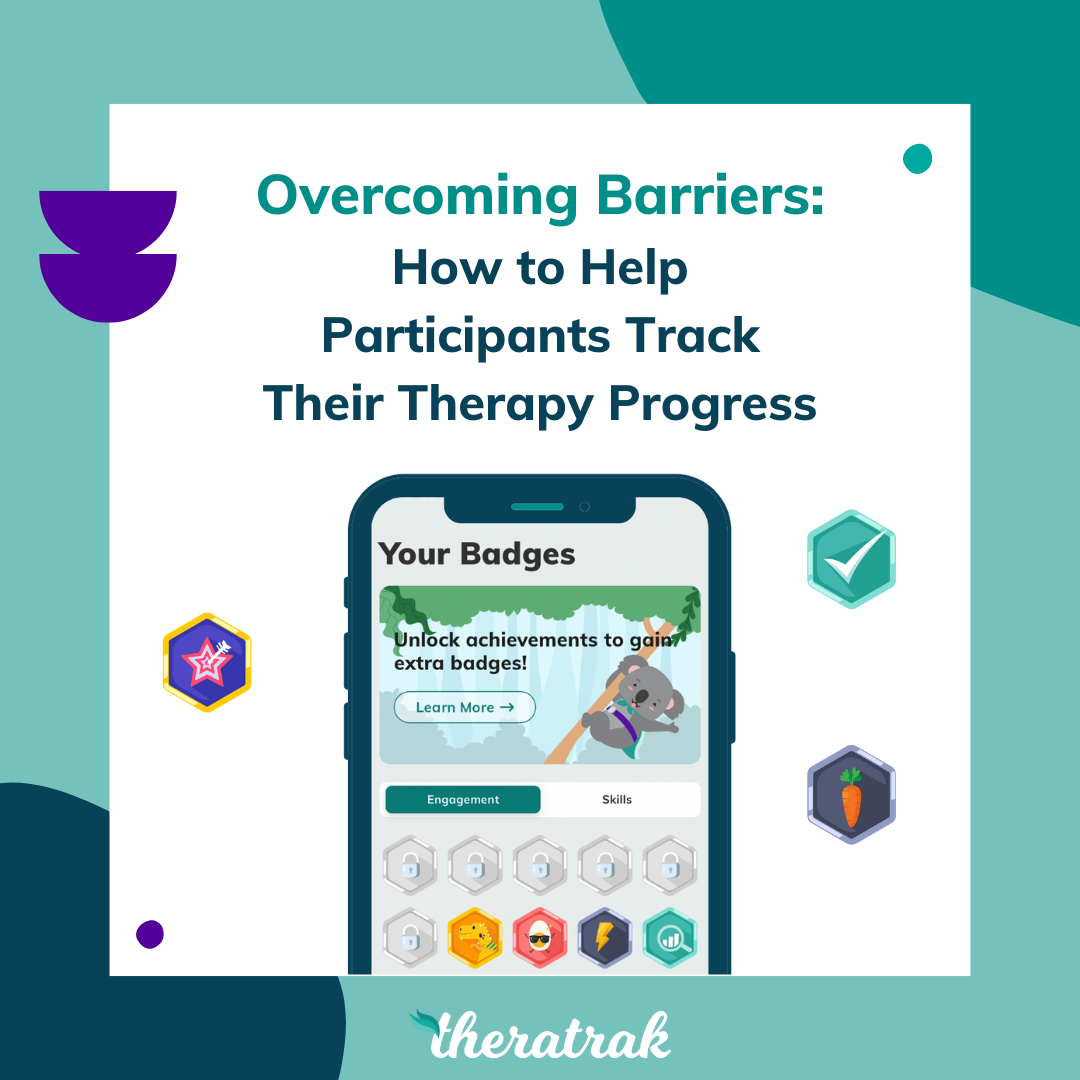Tracking therapy progress sounds simple on paper…
But in practice? Tracking progress long-term is often the first thing that gets dropped when a therapist's life gets busy, stressful, or overwhelming.
Still, we know that tracking home therapy programs can be a game-changer. It keeps clinicians in the loop, helps participants stay motivated, and ensures programs are effective over time.
So why is it so hard to get participants to actually track their progress outside of 1-1 therapy sessions?
At Theratrak, we’ve seen firsthand the barriers that get in the way - and the simple strategies that help clinicians support participants to break through.
Why Does Tracking Home Therapy Programs Even Matter?
Before we talk about the roadblocks, it’s worth highlighting why tracking therapy at home is worth the effort in the first place - for both therapists and participants.
✅ Better outcomes: With visibility over a participant’s progress (or lack of it), clinicians can make data-driven tweaks and support goals more effectively.
✅ More engagement: Seeing small wins adds up. Participants are more likely to stick to a program when they can see progress over time. All of their efforts are actually paying off!
✅ Clinical confidence: Data builds trust. When you can show what’s working (and what’s not), you build a stronger case for your care.
✅ Smoother communication: Real-time insights make it easier for clinicians and families to stay aligned and take action quickly. Quick responses are especially important when participants don’t fully understand activities, their needs change outside of sessions or their face-to-face sessions have big gaps between due to being within remote or regional communities (or busy clinics!).
So What Gets in the Way of Tracking Therapy Progress at Home?
Here are some of the most common reasons we’ve found from participants avoid tracking their home therapy program:
Home tracking feels like more admin: Especially for families already juggling a lot.
Home programs can bring up hard feelings: Tracking progress can highlight challenges or remind people of what’s not working.
Tracking at home is not immediately rewarding: Progress in therapy is slow. If you don’t see instant results, it’s easy to lose motivation.
Participants don’t believe in themselves: If someone already doubts their ability to improve, tracking can feel pointless - or worse, discouraging.
Participants or their busy families are already stressed or overwhelmed: Even the simplest task can feel too hard when you’re emotionally or mentally stretched.
Participants don’t see the point: Without understanding the why behind tracking, it can feel like busywork.
Families can worry about privacy: Not everyone is comfortable logging personal progress digitally.
Participants can be scared of accountability: Seeing the data makes it harder to ignore what’s not being done.
What Clinicians Can Do to Support Participants to Track Progress Over Time
You don’t need to force or nag - that never works!
A few intentional shifts in how therapists support at-home therapy tracking can make a world of difference.
1. Make it as easy as possible 💡
Use a simple, intuitive tool like Theratrak to remove friction. Templates, notifications, and real-time data make it feel supportive - not like extra homework.
2. Set clear goals together 🎯
When participants know what they’re working toward (and how tracking helps), they’re more likely to stick with it.
3. Celebrate wins - regularly! 🏆
Whether it’s finishing a task, earning a digital badge for regularly ticking off activities, or sticking to the plan for a week - positive reinforcement works.
4. Explain the “why” - to both participants and their families 🧠
Help families and participants understand how tracking helps you help them. It’s not surveillance - it’s support for better outcomes in therapy over time.
5. Address privacy openly 🛡️
Understand the digital tools and be clear about how data is used and stored. Most people just want reassurance that their info is safe and private. Theratrak uses enterprise-grade encryption software, adhere to all Australian data privacy standards - and Theratrak is even HIPPA certified for use in America.
6. Offer emotional support 💬
Be patient and empathetic. Tracking can be confronting, so a little encouragement goes a long way. With Theratrak, therapists can communicate asynchronously with their participants through the Journal feature - an excellent way to boost motivation and share encouragement in-between 1-1 sessions.
7. Make sure it’s part of your therapy process - and not just another thing to do ✅
Therapy sessions are already jam-packed trying to provide value for participants, in the short time therapists have. Make time for planning and prescribing as well as upskilling participants. And don’t forget the business side of the therapy process (invoicing *wink*).
How Theratrak Can Support Participants
Theratrak is more than a digital home program - it’s a smarter way to track, support, and improve therapy beyond the clinic walls.
Here’s what participants can expect when using the FREE Theratak Participant App:
Personalised programs for every participant ✏️
Real-time tracking and easy-to-read reports 📲
Motivating gamified features like progress badges and child-friendly visuals 🎮
Serious data security built for healthcare 🔒
Flexible enough to use in 1:1, group programs, remote check-ins, and more 🧩
Therapists have used Theratrak to simplify admin, improve engagement outside of sessions, and make better decisions about participant care - and we’re working on some big updates to make therapy even easier for therapists long-term.
Let’s Make Tracking Home Therapy Programs Feel Good
Tracking doesn’t have to be another thing on the to-do list. With the right support and tools, it can feel like progress, not pressure.
Curious to see how Theratrak can help?
Book a free demo today and discover how we’re making home programs easier to track - for everyone involved.
Or sign up for your FREE 30-day trial - no credit card required - and get started using Theratrak today.





